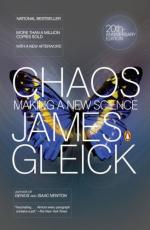
|
| Name: _________________________ | Period: ___________________ |
This quiz consists of 5 multiple choice and 5 short answer questions through chapters 9-11.
Multiple Choice Questions
1. What refers to a physical science that studies the effects on material bodies, and on radiation in regions of space, of transfer of heat and of work done on or by the bodies or radiation?
(a) Thermodynamics.
(b) Meteorology.
(c) Theoretical physics.
(d) Neuroscience.
2. What occurs when a fluid flows in parallel layers, with no disruption between the layers?
(a) Theoretical physics.
(b) Chaos theory.
(c) Laminar flow.
(d) Momentum diffusion.
3. What science deals with the visible, orderly outcomes of self-organization and the common principles behind similar patterns?
(a) Theoretical physics.
(b) Fluid dynamics.
(c) Thermodynamics.
(d) Pattern formation.
4. What concept originated by Thomas S. Kuhn refers to the routine work of scientists experimenting within a paradigm, slowly accumulating detail in accord with established broad theory and not actually challenging or attempting to test the underlying assumptions of that theory?
(a) Normal science.
(b) Psuedoscience.
(c) Science of commonality.
(d) Bland science.
5. In Chapter 4, "A Geometry of Nature," Houthakker explained to Mandelbrot the diagram in his office represented eight years of what?
(a) Almond prices.
(b) Cotton prices.
(c) Corn prices.
(d) Wheat prices.
Short Answer Questions
1. Albert Libchaber's results in his work with helium paralleled what equation that relates the pressure, viscosity, velocity, density of a fluid?
2. When was Mitchell Feigenbaum offered a post at the Los Alamos National Laboratory in New Mexico to study turbulence in fluids?
3. What is a lossy compression method for digital images based on fractals?
4. Where was Benoit Mandelbrot born?
5. Where was David Ruelle born?
|
This section contains 263 words (approx. 1 page at 300 words per page) |

|




